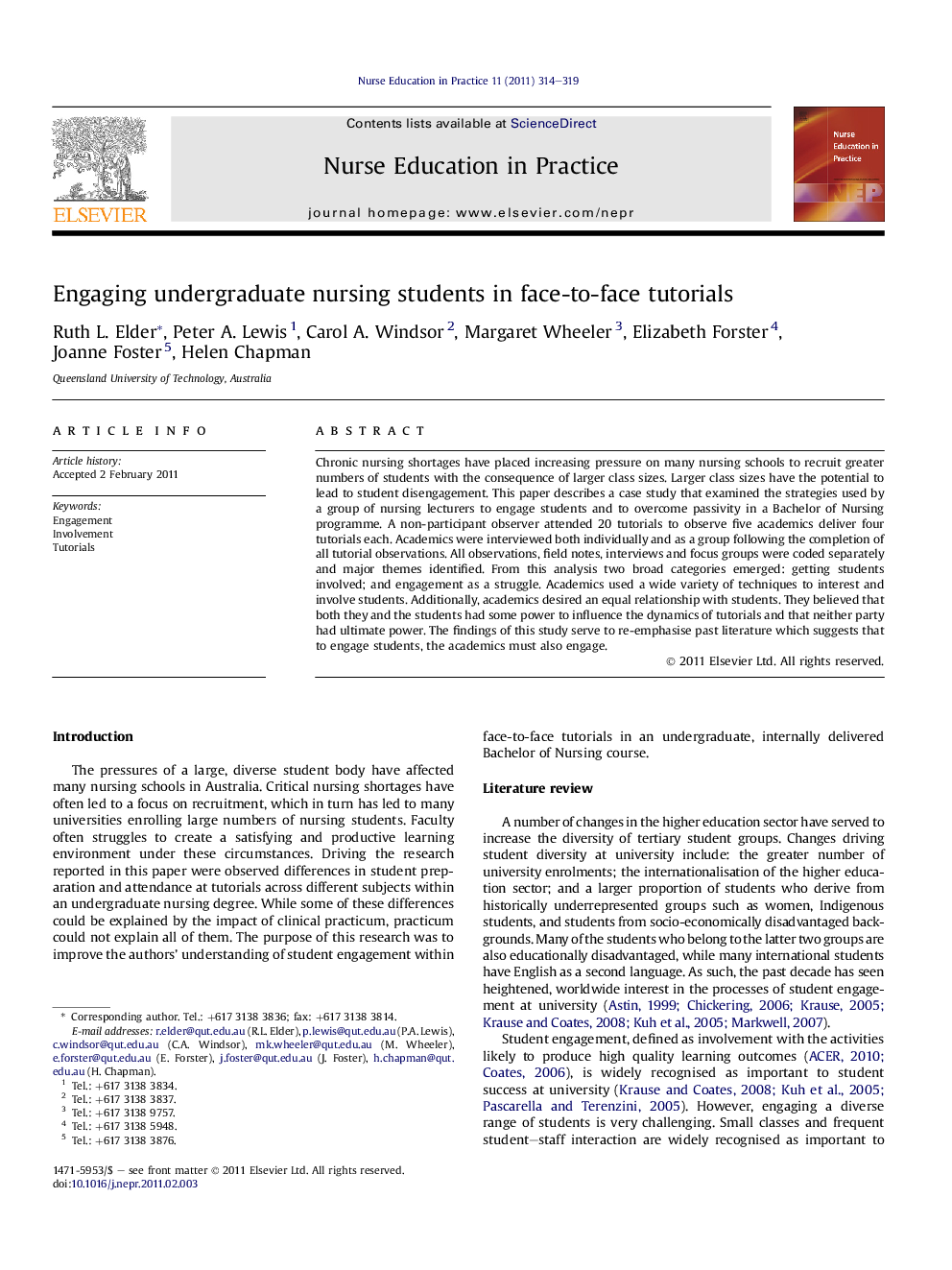| Article ID | Journal | Published Year | Pages | File Type |
|---|---|---|---|---|
| 367552 | Nurse Education in Practice | 2011 | 6 Pages |
Chronic nursing shortages have placed increasing pressure on many nursing schools to recruit greater numbers of students with the consequence of larger class sizes. Larger class sizes have the potential to lead to student disengagement. This paper describes a case study that examined the strategies used by a group of nursing lecturers to engage students and to overcome passivity in a Bachelor of Nursing programme. A non-participant observer attended 20 tutorials to observe five academics deliver four tutorials each. Academics were interviewed both individually and as a group following the completion of all tutorial observations. All observations, field notes, interviews and focus groups were coded separately and major themes identified. From this analysis two broad categories emerged: getting students involved; and engagement as a struggle. Academics used a wide variety of techniques to interest and involve students. Additionally, academics desired an equal relationship with students. They believed that both they and the students had some power to influence the dynamics of tutorials and that neither party had ultimate power. The findings of this study serve to re-emphasise past literature which suggests that to engage students, the academics must also engage.
